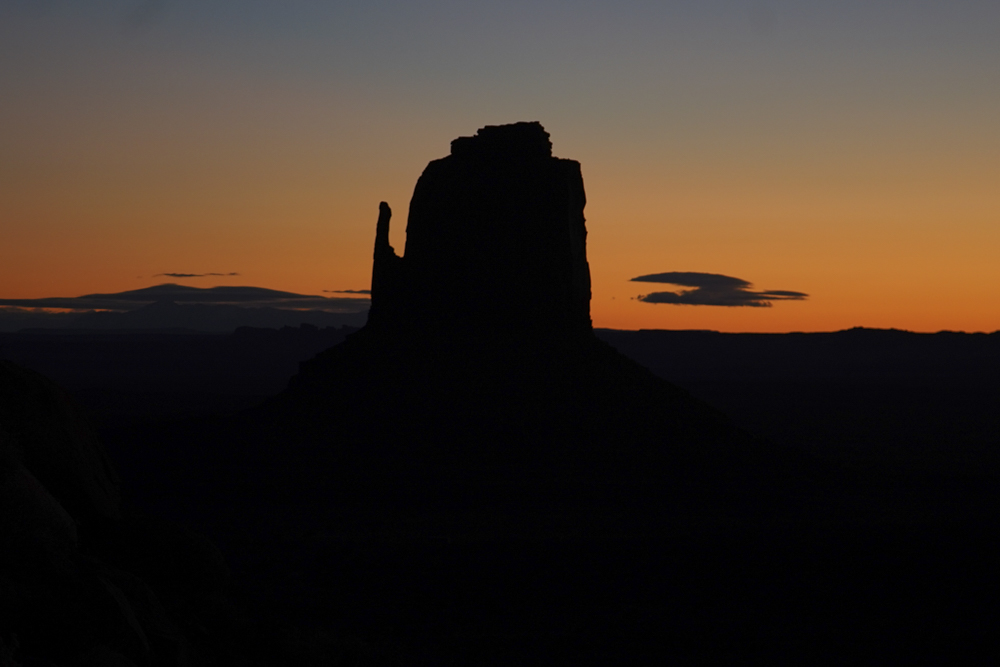
An EPIC Southwest Photographer’s adventure (in the off-season)
Last year I started a tradition of my own. After a weekend in Vegas, playing softball with my Oakland team, I set out in the beautiful southwest to explore, shake the Vegas-feels from my body and feel the specific kind of expansiveness that you can when surrounded by SPACE. That trip was through Utah, west to east. Zion National Park, Bryce Canyon, Grand Staircase Escalante National Monument, Goblin Valley State Park, Capita Reef, Arches, Canyonlands (at least the Needles section). To say it was epic, and soul-filling is to minimize it.
This year, my route was mostly hovering around the AZ/UT borderlands. Horseshoe Bend, which is on the Colorado River and part of Glen Canyon National Recreation Area, Antelope Canyon on Navajo Land, Wire Pass/Buckskin Gulch in the Paria Canyon-Vermilion Cliffs Wilderness, Monument Valley, also on Navajo Land, the Vermilion Cliffs on their southern front near Marble Canyon, and lastly, Valley of Fire State Park, on my way back to the airport in Vegas.
I took the opportunity to flex my new camera, the Sony A7III, explore night photography in Monument Valley, and get to know the camera that will be my travel companion for hopefully many years to come.
HORSESHOE BEND
I had wanted to visit Horseshoe Bend and Antelope Canyon for a few years, not realizing how close I was during last year’s trip. Horseshoe Bend is a place in the Glen Canyon National Recreation Center just a few miles from Lake Powell. It’s a spot where lots of tourists visit, and despite bitter winds, and cold, there were tourists buses there, with folks making the steep but short hike to the lookout. You may likely have seen imagines of both of these places, as they are prime spots for witnessing the beauty of NATURE, as well as taking incredible photos.
Antelope Canyon can only be accessed by Navajo-led group tours. In the summer, these sell out way in advance and are packed. You only have a certain amount of time in each section of a short canyon, and follow and lead other groups each way. Despite the utter beauty and the way light and rock dance in this canyon, there isn’t much of a quiet opportunity to soak it in, never mind take photos without people in them. I got lucky. I felt both, and took *way too many* photos. But each turn and offered a completely new perspective, a dance of positive and negative space.
Being in there was spiritual, haunting. It felt like a treat for the eyes a boost for the heart and an expansion of the mind.
(UPPER) ANTELOPE CANYON
SOLO TRIPS!
Some people are awed by my solo road trips. ‘Don’t you get lonely?’ Rarely. For me, it’s something about exploring, being out in nature, connecting with random people along the way, and connecting, most importantly with myself. Sometimes it would be lovely to share that with another person, but being there alone feels purposeful to me. It usually refreshes me in many ways.
The photos that you’ll see below are from the Paria Canyon-Vermilion Cliffs Wilderness, and more specifically, the Coyote Buttes South. I really wanted to hike The Wave in Coyote Buttes North, but the BLM only offers 20 permits per day, ten in advance and ten day before. Since the government was shut down, and they wanted to keep it protected for a reason, I decided to hike the Wire Pass trail which connects with Buckskin Gulch. This area is about halfway between Kanab, UT and Page, AZ, and about 9 miles down a very rough road.
VERMILION CLIFFS/COYOTE BUTTES
MONUMENT VALLEY
This year, as my journeys took me, primarily through Navajo Nation.
The complexity of being on THAT LAND was incredibly present for me. To put it simply: white people stole native land, reduced native land to areas that they deemed sufficient, stripped their culture in many ways, (though don’t get me wrong, native people are incredibly resilient), and now, a high percentage of native people live in dire poverty. As a white person visiting these lands, I felt humbled, guilty, heartbroken, and full of awe.
Native people are incredibly resilient, AND YET, this country has done so much damage to their culture, their stability, their natural way of being. It felt incredibly important to hold this close to my heart as I traversed Navajo Nation. In Monument Valley, which is a Navajo Nation Tribal Park, I stayed in the Navajo-owned hotel.
Driving around that land, stopping here and there to be outside of the car, explore, take photos, it was honestly depressed to see the many stands of Native Americans selling jewelry, or photos of a man on a horse with MV in the background.
To be clear, without context, the jewelry, the photos – all can be beautiful. BUT, looking at the history of how so much of their land and way of being was stripped, selling their wares in this way seemed like being relegated to doing what they needed, appealing to a mainstream white version of a Hollywood cliche in order to survive. It’s complex, and I want to learn more, understand more.
Photography wise. WOW. Unlike canyon lands, everything is out in the open and exposed. An open landscape with huge sculpture like structures jutting up from the land. I learned that it’s what people thought of as ‘THE WEST’ circa 75-100 years ago via Hollywood movies that were filmed there. There were a few times where I wept at the beauty. Because I was staying in the park, I had phenomenal views of everything from the patio of my hotel room, or the restaurant, or the many decks at the hotel. This meant that I took photos of sunset, of the sky late at night, and of the sunrise. It was spectacular and allowed me to get closer with my camera in new ways.
MONUMENT VALLEY
SUNSET, NIGHT SKY, and SUNRISE PHOTOS.
Vermilion Cliffs
Heading back east from Monument Valley, I decided to spend my last night on the southern edge of the Vermilion Cliffs in a tiny area (not a town) called Cliff Dwellers. Before heading to the spot that I stayed in, I took a right immediately after Navajo Bridge (which goes over the Colorado) and headed into the cliffs at Lees Ferry. Beyond balanced rocks, slot canyons that led to the River, was a small white sand beach called the Paris Beach. Within a few feet, I was officially in the Grand Canyon National Park.
The sun was shining, the mini-rapids moving, the white sand feeling completely out of the ordinary while surrounded by these canyon walls. Yet there I was. A little bit up stream is where Lee’s Ferry used to be: the easiest place to cross the Colorado by ferry. I didn’t end up going there, instead choosing to sit on the beach and watch the river swiftly flow by. It was a place that really has entered my heart due to the confluence of the bright pink/purple cliffs, the water, and the pristine beach.
About 8 miles back on the main road, in/around Marble Canyon, I found my little hotel. Just a few of us staying there in the off-season that they asked us what time we wanted dinner and just opened the little restaurant for an hour to feed us. Before dinner I took a hike down a wash about a half a mile away that led me to more ruins of cliff/stone houses, old farm equipment and a broken down old car. I got back just before the sun was completely gone, and did some research about that hike. Apparently, the white folks who inhabited the cliffs basically created a pathway for Mormon couples to get to the Mormon church in St. George, Utah to get married. Thus, this hike that I took, was part of the Honeymoon Trail.
Many trails are in washes. It wasn’t until I started exploring the Southwest that I understood the term ‘Wash.’ It’s basically an area where water forges a pathway. Many washes lead to and from slot canyons or just plain canyons, and this can make them extremely dangerous during the wet season due to flash floods coming from a higher altitude. This wash had a small stream of water, and without a cloud in the sky, I knew I would be safe from an sudden flood.
KAIBOB FOREST – VALLEY OF FIRE
The last leg of this journey found me in Kaibob Forest, which is the entranceway to the North Rim of the Grand Canyon. Heading up into the forest from Cliff Dwellers, the temperature dropped to a brisk 8 degrees and the ground was white with snow. It was a stark contrast to the desert. Up through the Kaibob Forest, once at the top you can stop at a lookout to see the Colorado Plateau, the the giant steps of Grand Escalante in the distance. The Earth truly is incredible.
My last stop on the way to the airport in Las Vegas is only about 50 miles away from that city. The Valley of Fire, a place that I went to with my dad over 20 years ago. You drive into a valley and all of a sudden, a fiery grouping of rocks changes the entire desert landscape. I used my few hours there to hike through Pastel Canyon (named from the beautiful colors), and to the backside of the Fire Wave. The Fire Wave looks a lot like the aforementioned ‘Wave’ in the Vermilion Cliffs, but is a brighter color, and more accessible. The patterns and colors were awesome. Although I wished I had more time, it was nice to know that it’s an easy trip from the heart of Las Vegas. I’m already looking forward to next year’s softball tournament with my team, and the adventure to follow.
TIPS:
Think about going in the off-season.
Plan most of your trip, but save a night or two for spontaneity.
Make sure you check the weather for rain anytime you drive on dirt roads or hike in a wash or slot canyon.
Bring your camera, and get to know it and your tripod before you head out.
Take a map! You might not have access to cell service or wifi.
Bring a 1-3 gallon jug of water, just in case.
Read up on what it means to travel through Navajo land.
BE a conscious visitor!



